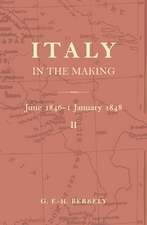Louis XVI and the French Revolution, 1789–1792
Autor Ambrogio A. Caianien Limba Engleză Paperback – feb 2017
| Toate formatele și edițiile | Preț | Express |
|---|---|---|
| Paperback (1) | 284.01 lei 6-8 săpt. | |
| Cambridge University Press – feb 2017 | 284.01 lei 6-8 săpt. | |
| Hardback (1) | 694.23 lei 6-8 săpt. | |
| Cambridge University Press – 19 sep 2012 | 694.23 lei 6-8 săpt. |
Preț: 284.01 lei
Nou
54.34€ • 56.89$ • 44.97£
Carte tipărită la comandă
Livrare economică 05-19 aprilie
Specificații
ISBN-10: 1107631017
Pagini: 270
Ilustrații: 10 b/w illus. 5 tables
Dimensiuni: 152 x 229 x 14 mm
Greutate: 0.36 kg
Editura: Cambridge University Press
Colecția Cambridge University Press
Locul publicării:New York, United States
Cuprins
Introduction: Louis XVI, a constitutional monarch?; Part I. Inventing a Constitutional Monarchy: 1. The Maison du Roi at the twilight of the Ancien Régime; 2. The Liste Civile, the new monarchy, Sieyès and the constitution; 3. The court of the Tuileries 1789–92; Part II. Reform and Survival of the Ancien Régime: 4. The royal guard during the French Revolution; 5. Court presentations and the French Revolution; 6. The age of chivalry is gone?; 7. Louis XVI's chapel during the French Revolution; Conclusion; Bibliography.
Recenzii
'In this detailed and innovative study, which will be required reading for all historians and students of the Revolution, Ambrogio A. Caiani offers a major re-evaluation of the history of the French Court after 1789 and of the failure of the Constitutional Monarchy.' Julian Swann, Birkbeck, University of London
Descriere
The experience, and failure, of Louis XVI's short-lived constitutional monarchy of 1789–92 deeply influenced the politics and course of the French Revolution. The dramatic breakdown of the political settlement of 1789 steered the French state into the decidedly stormy waters of political terror and warfare on an almost global scale. This book explores how the symbolic and political practices which underpinned traditional Bourbon kingship ultimately succumbed to the radical challenge posed by the Revolution's new 'proto-republican' culture. While most previous studies have focused on Louis XVI's real and imagined foreign counterrevolutionary plots, Ambrogio A. Caiani examines the king's hitherto neglected domestic activities in Paris. Drawing on previously unexplored archival source material, Caiani provides an alternative reading of Louis XVI in this period, arguing that the monarch's symbolic behaviour and the organisation of his daily activities and personal household were essential factors in the people's increasing alienation from the newly established constitutional monarchy.








